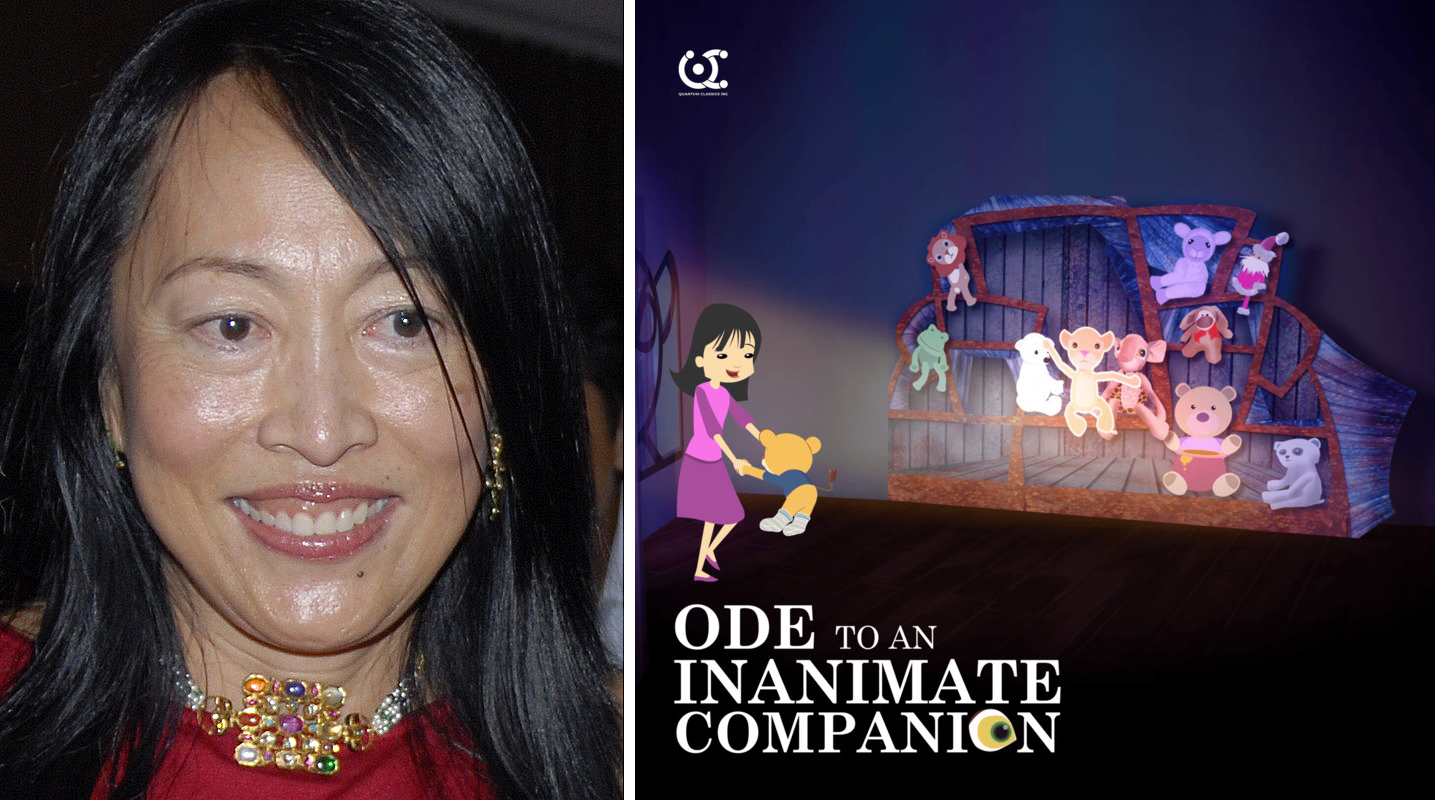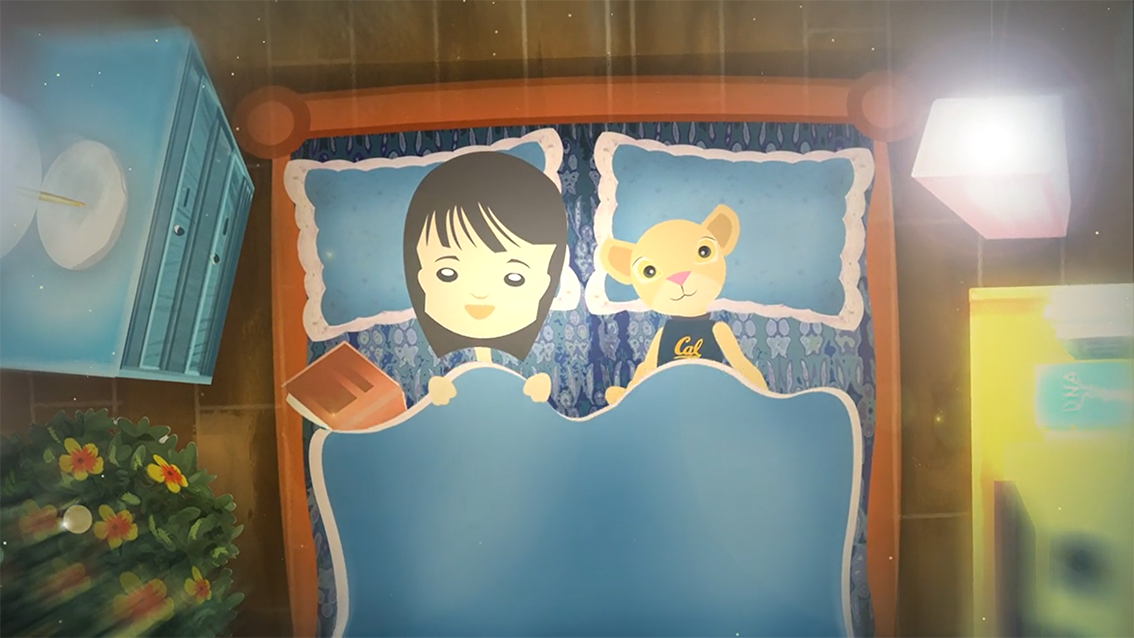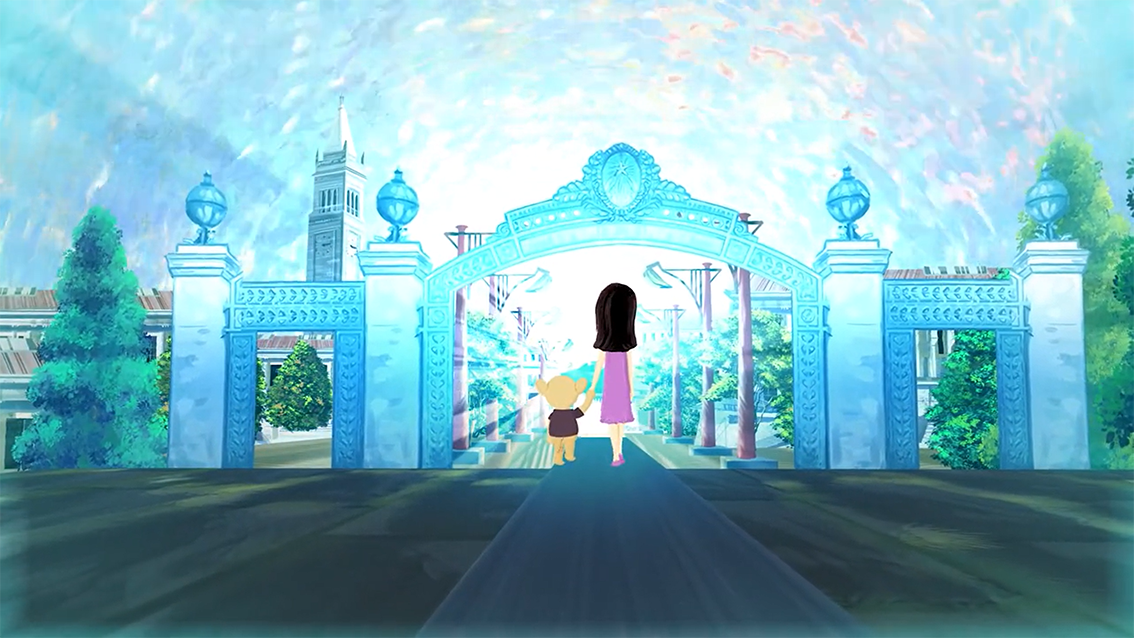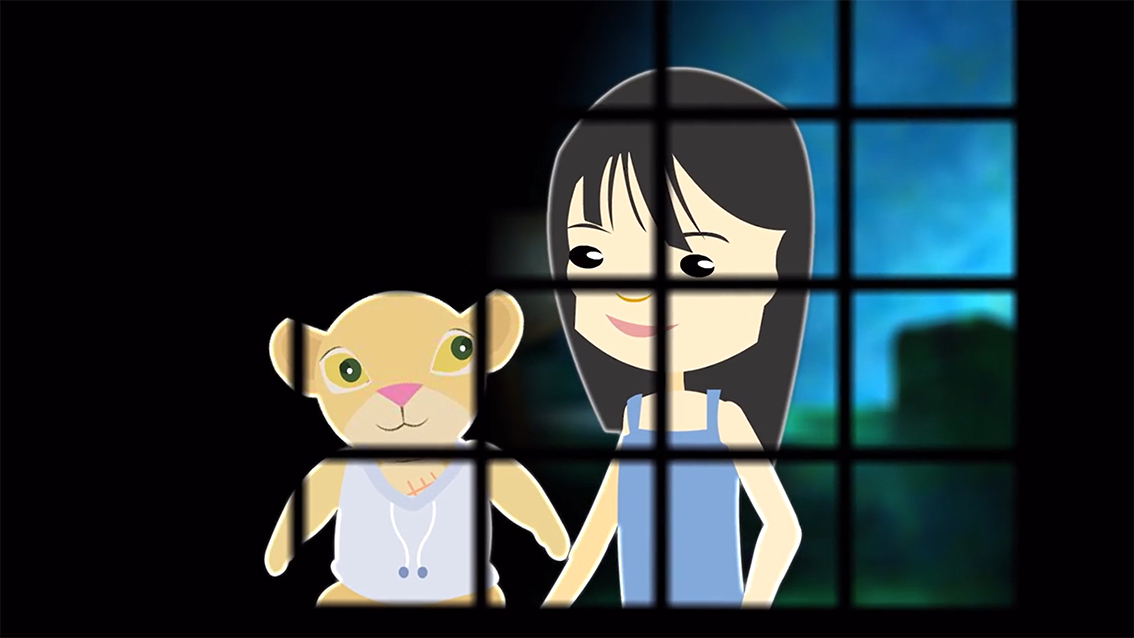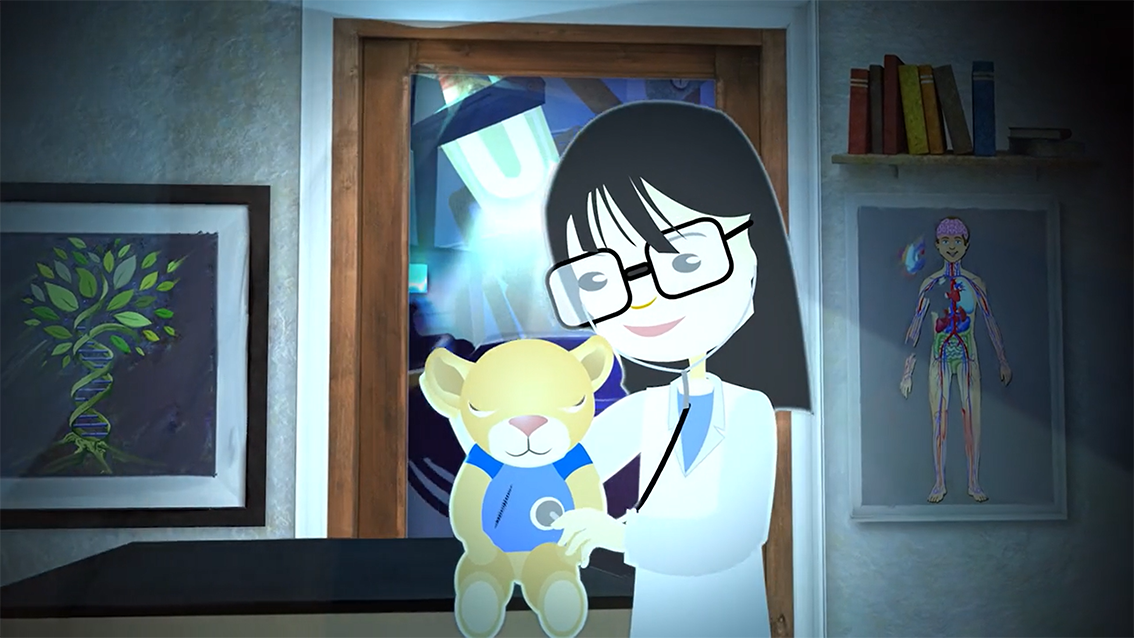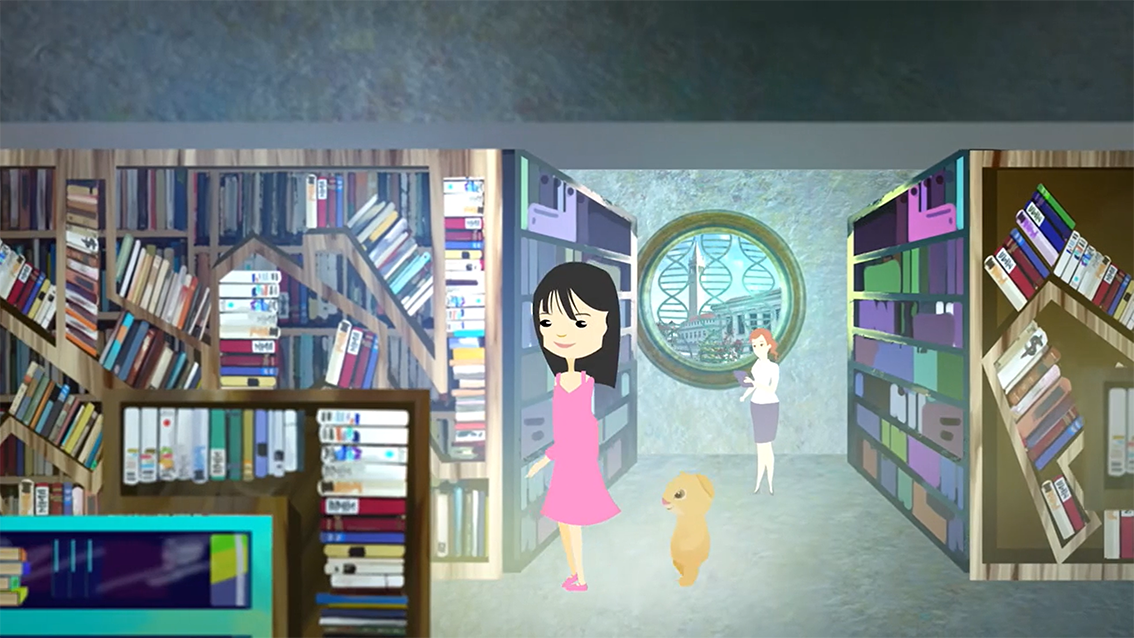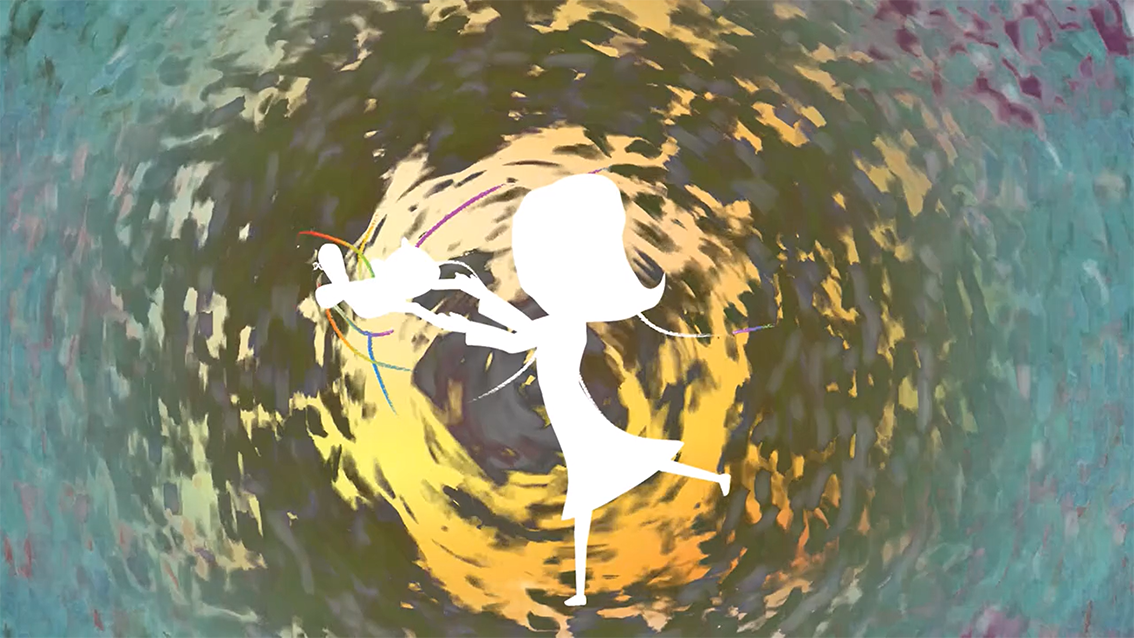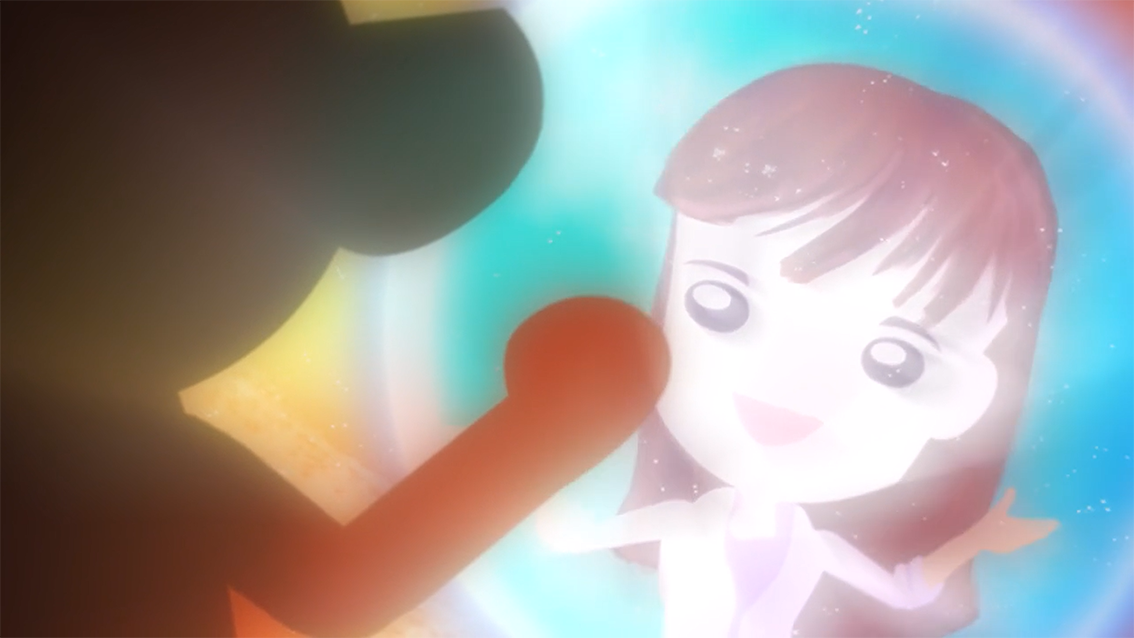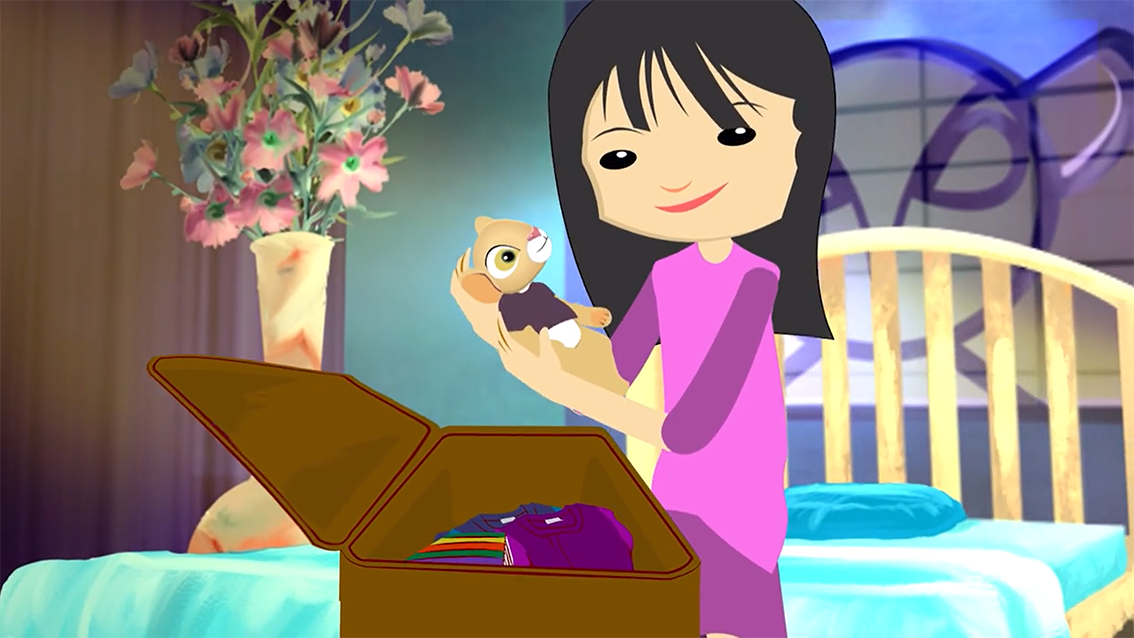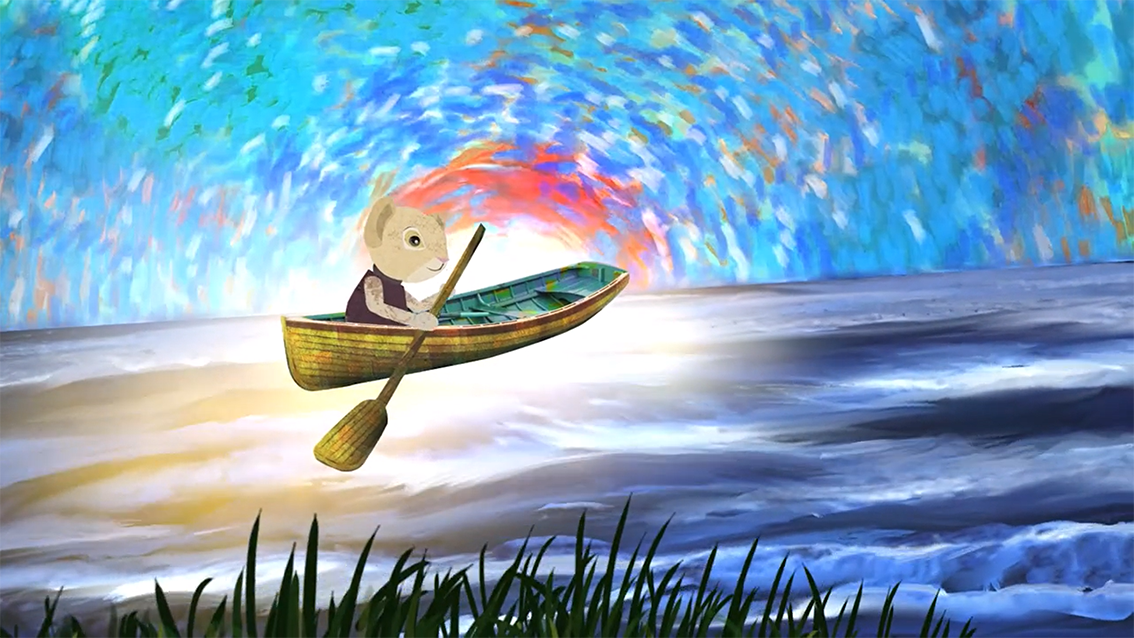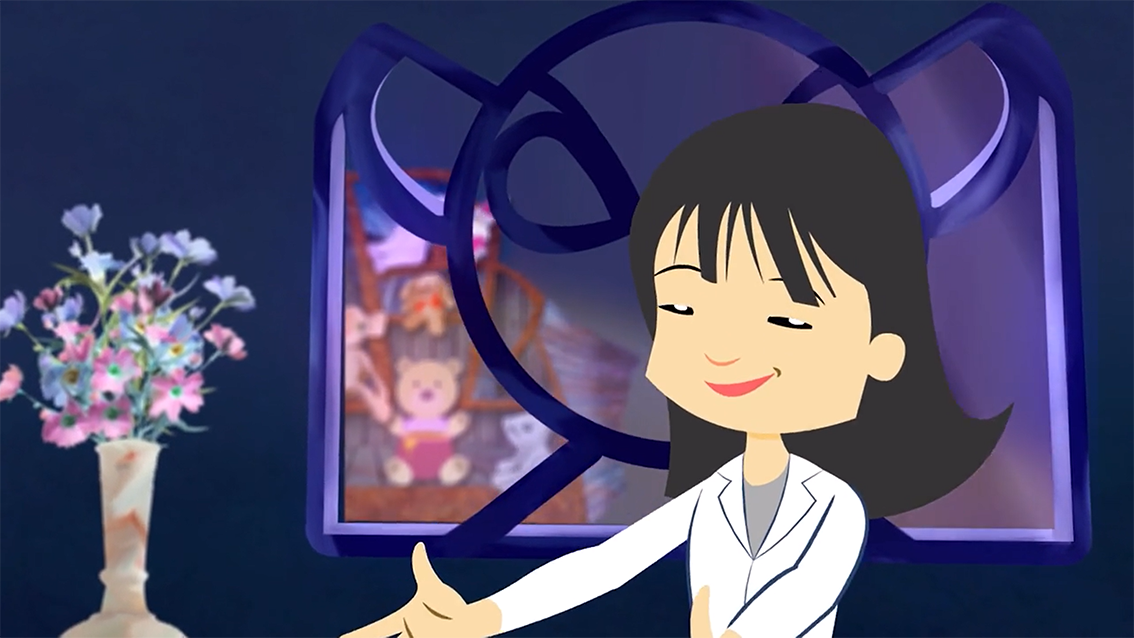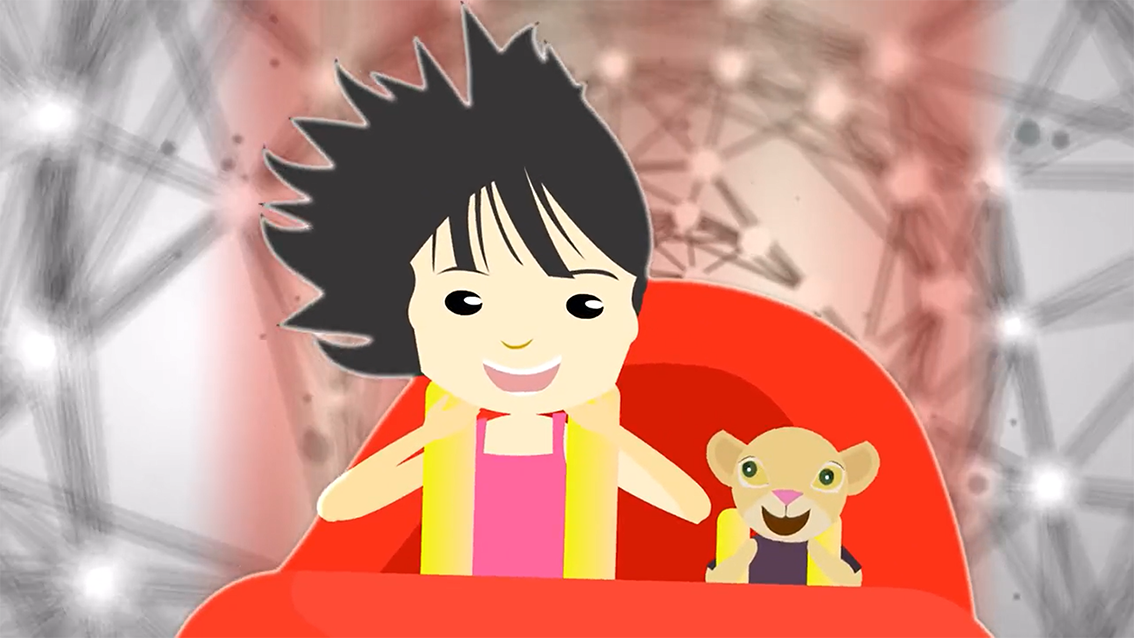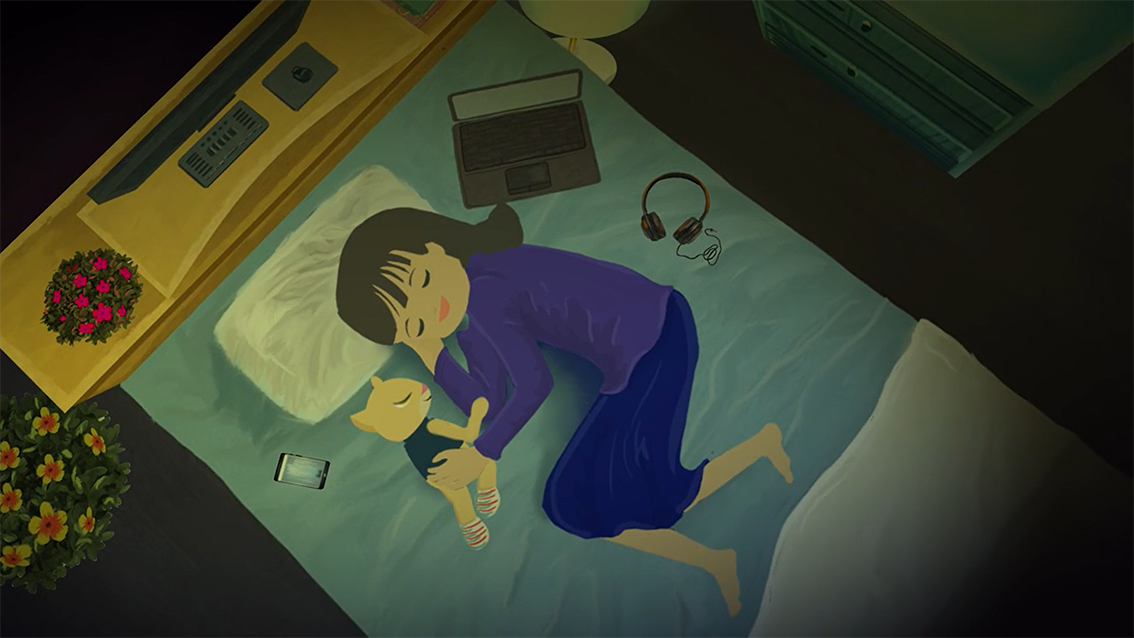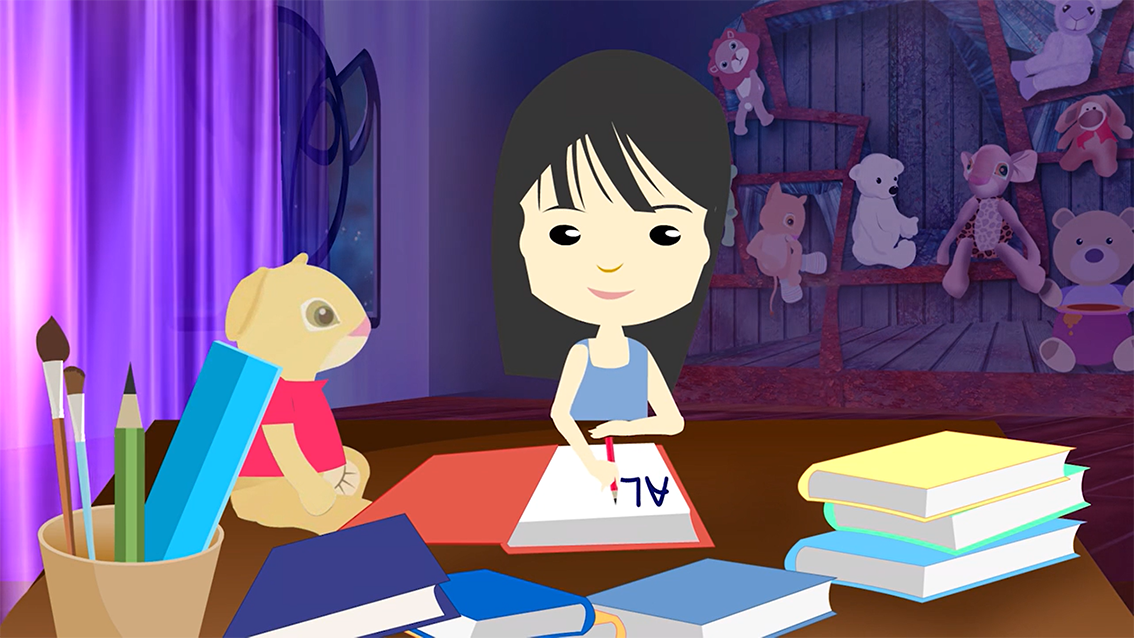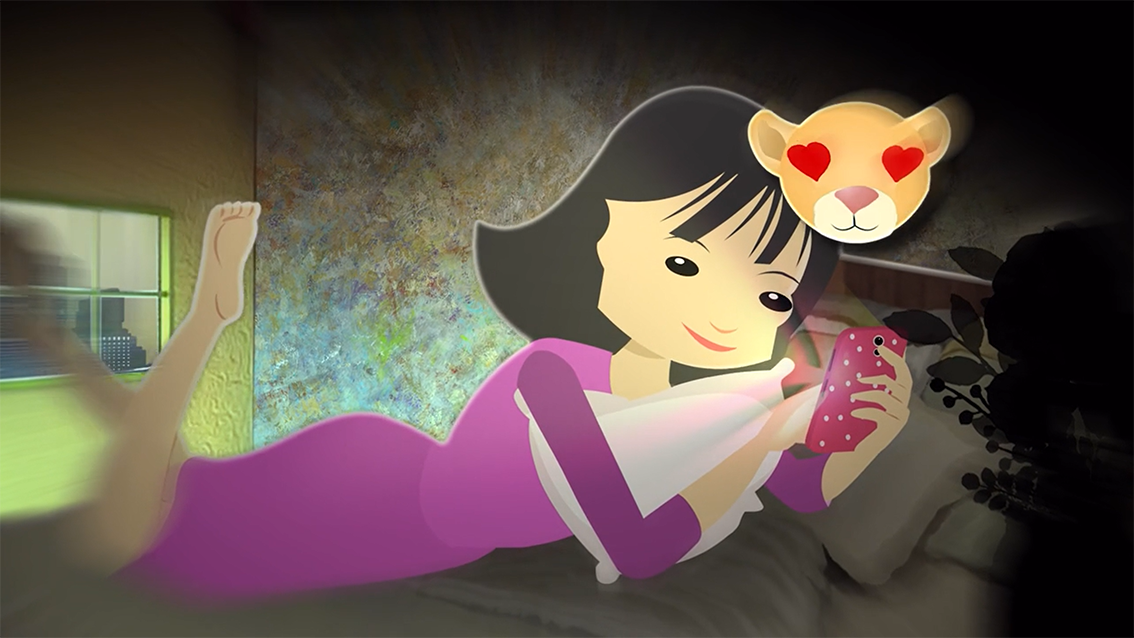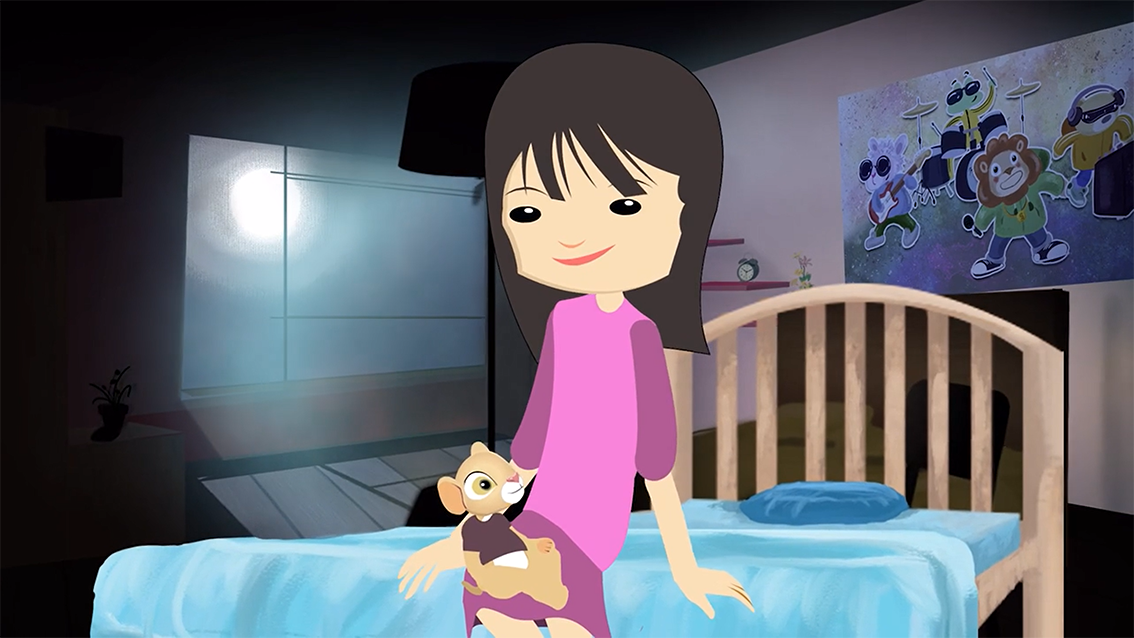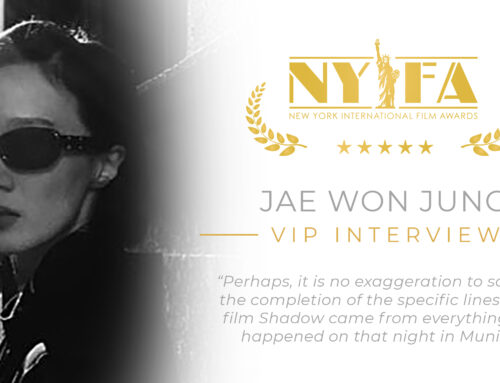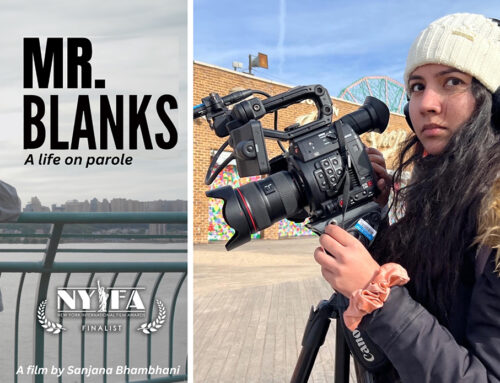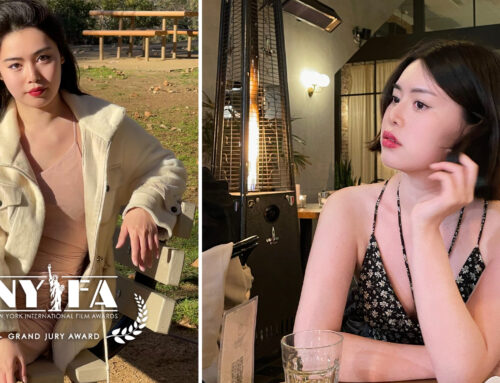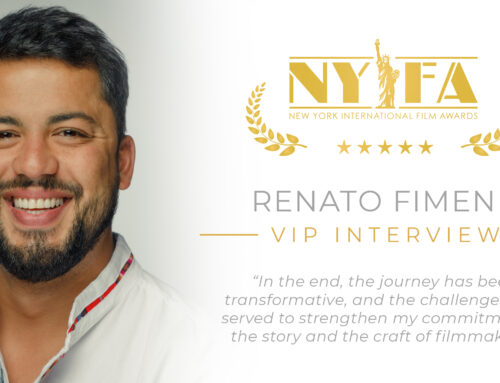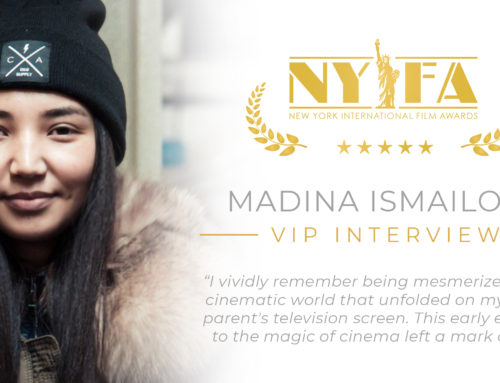VIP Interview with Susan Lim, award winning director of the Short Film ‘Ode to an Inanimate Companion’
In this interview, we had the pleasure of talking with Susan Lim, a talented director, storyteller, composer, and scientist. “Ode to an Inanimate Companion” is the second movie she has directed on the theme of companionship between human and inanimate: a touching story that narrates the story of a young girl Cristina and Al, a plush baby lion. As we see Cristina growing up into a young woman, we really question what’s behind the companionship between these two characters: what is the future of the relationship between human beings and Inanimate and where is Science leading us on this matter? And finally, how the pandemic affected or accelerated this companionship?
Hi Susan! You co-directed the animated short “Ode to an Inanimate Companion” alongside Samudra Kajal Saikia and Christina Teenz Tan. How was this experience for you?
Ode to an Inanimate Companion enters the imaginary world of a human, Christina, and inanimate named Alan, and follows their relationship through the years. As Christina, Samudra and I embarked on this film, it seemed natural, from the outset, that we would be in a virtual studio, as we were geographically distanced from each other.
Samudra is a key member of our Alan team, an artist extraordinaire from Assam, a poet, and master of Visual Arts, specialized in Art history. His artistic relationship with the Alan character dates back to 2017, when I first approached him to create an Alan Hologram for my speaking assignment on the Future of Companionship, the first time I had publicly launched this concept for our fictional works.
Christina is the co-creator of Alan, a vivid storyteller and lyricist, from the time she was a medical student in Melbourne, to the present, as a young Neurology Resident. She wrote the lyrics to the song Life on the Shelf, the orchestral version of which, forms the opening track for Ode to An Inanimate Companion.
My contribution is as the co-creator and lyricist, providing the scientific inspiration and musical direction for the project. Though we were separated by huge distances, with time zones almost impossible to manage, it seemed like serendipity that the music and plot of Ode to an Inanimate Companion would sweep us together effortlessly in one studio.
This is the second film you’ve made about the relationship between Humans and Inanimate. What should the audience expect to find in this second project? How is the story progressing?
The overarching theme of project Alan is the future of companionship between humans and inanimates, enabled through the new science of synthetic biology and the technologies of robotics, artificial intelligence (AI) and quantum physics, as we are faced with the global challenge of loneliness and the need for new approaches to companionship in a future world. The aim is to bring bold new ideas to the fore, and Ode to an Inanimate Companion is just that, a tribute to our inanimate companions that we may take for granted, a dedication if you like, from human to inanimate.
Do you believe that the scientific progress and innovations boost the human imagination? Do we progress when we dare to imagine, or does the progress help push the limits of our imagination?
The answer is a definite yes, to both. Progress in Science opens new possibilities, provides new solutions, and fires up the human imagination.
Who would have thought that advances in the field of immunology would inspire a re-visit to the use of animal organs as xenografts, which is in a research phase of development, or that breakthroughs in Materials Science would provide new scaffold material for the 3D printing of organs also in a research phase of development. We have always imagined, through science fiction, the ability to print human parts, as in the 1953 film “Four-Sided Triangle” by William F Temple, and now we have embarked on a roadmap to creating reality from science fiction.
The director Susan Lim and the official poster of ‘Ode to an Inanimate Companion’
You are also the writer of this touching story. What’s the inspiration behind “Ode to an Inanimate Companion”?
Perhaps I am a sentimentalist. As a robotic surgeon, I had partnered a robot in the operating room, spent long hours working on difficult cases together over many years, and developed empathy and respect for my inanimate companion. I believe the partnership of man and inanimate machine performs a task better than either can alone. Of course, a robot surgeon is one extreme end of an almost infinite spectrum of inanimate companions, ranging from a painting, a musical instrument, to a plush inanimate, a cuddly toy.
Christina and I wanted to portray our inanimate companion as a more relatable object for our viewers, warm and friendly, and settled on a plush inanimate baby lion doll, which we named “Alan”. There are few who have not owned a plush inanimate, cherished through childhood, discarded with indifference in adulthood. Ode to an Inanimate Companion is a tribute, a dedication from a human being to an inanimate companion, we hope that this story may evoke feelings of empathy for inanimate objects dear to us, and, on a broader level, toward society as a whole.
We perceive a lot of loneliness watching Christina and Alan the Lion walking around an empty city. Is this a reference to the images we’ve all seen of the biggest capitals in lockdown during the pandemic?
Loneliness has been recognized as one of the greatest public challenges of our time, much before the covid pandemic. The UK took the lead in 2018, in establishing a Ministry for Loneliness, and Japan followed in early 2021 with the appointment of a Minister of Loneliness to address the issues of social isolation. As the Covid pandemic swept in to engulf towns and cities, with almost no country spared, the issue of loneliness has taken center stage. This has forced an accelerated adoption of virtual connections through zoom, facetime, and the like, to help cope with isolation and loneliness. In a sense then, the pandemic has unintentionally accelerated the path toward a future of companionship that will extend beyond physical human-human interactions, to a virtual world with avatars and intelligent inanimate interactions. Of course, we are all rejoicing as we emerge from this crisis, and return to physical gatherings and real life interactions. Though it is inevitable that our physical and digital worlds have started to fold together, as we interact between ourselves, our computers and devices, and the environment around us.
The movie clearly has a huge scientific component. How do you combine your careers as a scientist and as a filmmaker? Do you create your film through the lens of a scientist?
Art and science go together. While surgery is a scientific study, its practice is an art. As a storyteller and filmmaker, I have always looked to communicate scientific concepts through music and art, and some of the musical tracks of our Orchestral Fantasy of Companionship for Piano and Orchestra (Fantasy) reference science and technology such as Synthetic DNA, New World Order and Teleportation. The music of the Fantasy, from which the soundtrack of Ode to an Inanimate Companion is derived, is embedded with the DNA code of the inanimate, like a motif, that is expressed musically, as melodies and harmonies, and in art form, as animation and film.
On a technology front, the disruptive concepts of soul machines powered by artificial emotional intelligence and robotics, inspired the transition to a New World Order for the Inanimate, as it craved mobility, independence, and respect. Today, this is not entirely unimaginable, as a new breed of astonishing artificial companions take their place alongside humans in society, challenging conventional norms, showing empathy, and blurring the lines between what is life and what is non-life, which I feel strongly should be opened to the public as a global conversation, through the performing arts and Cinema.
There are a lot of art references in your film. The Rodin’s Thinker, The Bedroom by Van Gogh. What would you like to express through these masterpieces?
Coming down to filming, the art of building a narrative of a future companionship between human and inanimate was the most basic concern for our team. At the core, this was not just another film making project, but, a collective and composite form of all arts coming together across a spectrum of collaboration. So, while narrating our story through animation, we tried to incorporate different artistic sensibilities achieved by the great masters across history. Led by our animation artist and art historian Samudra Kajal Saikia, we adopted an experimental approach which enabled the team to explore different visual narrative traditions, in line with the cross-genre music of the Fantasy. While the art references were a tribute to the great masters, a closer look reveals a deeper communication. The most thoughtful and melancholic sequence portraying a contemplative Alan has a reference to the thinker of Rodin. Similarly, The ‘Yellow Room’ of Van Gogh is not only a stylistic experiment, but also carries a thematic resemblance. The art enthusiasts know it well, the yellow room contains two pillows, two chairs suggesting a sense of companionship; an empty room but there is provision for two persons. The yellow room may have several interpretations to art lovers, but it certainly contains a memory of the companionship between Van Gogh and Gauguin, and this adaptation of the visual treatment of Van Gogh’s yellow room references our theme of companionship in the Ode to an Inanimate Companion.
Can you tell us more about the team involved in the production?
This is my proudest achievement entering the Performing Arts to date, to have identified and brought together a truly talented team of composers, musicians, and animators from four continents, as the Alan team, working passionately together to create beautiful art in the form of music and film.
Our composers for the 15 original Alan songs hail from 3 different continents, Joi Barua, Mumbai, India, Ron J Danziger Melbourne, Australia, Matthieu Eymard Les Arcs, France, and the composer, orchestrator and arranger for the Fantasy, Manu Martin from Bordeaux, France. I first met Joi Barua at a Conference in Singapore where we shared the stage, myself as speaker, with Joi following on as singer. I was taken by his talent and over lunchbreak, asked if he would compose music to lyrics I had written for an Alan song. He agreed, and the outcome was our theme Alan song, which started us on this creative journey.
I consider France to be the birthplace of our music, as it is where I met our project manager and lead vocal Matthieu Eymard, and composer and orchestrator Manu Martin, both of whom were performing at the ski resort of Courchevel 1850, the annual winter retreat for my family. In the winter of 2016, while in the cocktail lounge of the Cheval Blanc, enjoying an apres ski aperitif with my soulmate Deepak Sharma, I approached Matthieu Eymard, who was performing that evening, to sing our newly composed Alan song. The rest is history.
We have a strong French presence in our team of musicians – Jerome Buigues electric guitar, Frederic Riviere bass, Manu Martin keyboard, Matthieu Eymard vocals, joined by Michele Drees on drums and Afla Sackey on percussions from London. Co-creator and co-lyricist Christina Teenz was a medical student in Melbourne, Australia, at the time she wrote the lyrics to 5 Alan songs. She has since graduated, and is a Neurology Resident at the Cedars- Sinai in Los Angeles.
An idea for an orchestral recording first came about when Matthieu and Manu shared with me the idea to include a strings arrangement in four of our Alan songs which had been created for Alan the Musical. The result was astounding, as it amplified the lyrics with an added dimension and depth of expression. Simply put, it took my breath away ! Almost immediately, I thought, why leave out the other Alan songs? Brainstorming with Matthieu and Manu, we dreamt up a full orchestral recording which would draw inspiration from ALL of our 15 Alan songs. In the spring of 2018, I travelled to a small town Rye, in Upstate New York, to meet with the renowned, retired pianist Tedd Joselson, to seek his opinion of this concept. We lunched in the historic French cottage restaurant La Panetiere to a menu inspired by the berries of the season. Tedd’s strong affirmation of our orchestral plan to include our 15 ALAN songs, set into motion a series of events, and overnight a Fantasy was born, orchestrated and arranged by the gifted composer Manu Martin.
Tedd Joselson agreed to come out of retirement to lead as solo pianist, and brought in Arthur Fagen, music director of the Atlanta Opera, as Conductor. Despite the fact that composer, creator, pianist, and conductor were located on three different continents, we managed to meet physically for two weekend rehearsals at home in Singapore, before the big recording at Abbey Road Studios, with the London Symphony Orchestra conducted by Arthur Fagen, Tedd Joselson on piano, and a 36 member choral ensemble of London Voices. Of course, there is much more to this. The 15 original songs of the Alan Musical, whose melodies inspired 15 tracks of the Fantasy, were recorded in 3 separate Abbey Rd sessions between 2017 and 2019, and Samudra came on board our team as Director of Animation in 2018. Together, we banded loosely as the Alan team.
It was our dream to record at Abbey Rd Studios, with the London Symphony Orchestra, and one that came true for us.
Who is the director that inspires you the most and who is the scientist that inspires you the most?
The director James Cameron inspires me the most, not just for the futuristic themes of his movies, and his support for the environment, but also because I have had the opportunity to meet him in person and participate alongside him at the INK Talks in Lavasa, 2010. During this encounter, I experienced first-hand, his intellect and alertness for all things new and “into the future”, as he was curious about the subject of my talk, “transplant cells, not organs”, which subsequently made the TED platform.
Jennifer Doudna is the most inspirational scientist for me, for her breakthrough Nobel-winning research on CRISPR technologies. She co-developed a method for genome editing, a pair of genetic scissors, for editing and rewriting the code of life. Indeed, the subject matter of her research inspired the track Synthetic DNA in Act 4 of the Fantasy.
Jennifer is also known to me personally, as she has been guest speaker at the Global Forum for Stem Cell Research which I co-chaired for several years in Palo Alto. She is a Professor at the University of California at Berkeley, where she heads up an amazing lab, is down to earth, and is loved by her students, including co-creator ChristinaTeenz, who did her undergraduate studies at UC Berkeley and attended her classes.
Do you feel the music score of the movie serves as a character in the story or did you choose to use it more to create tension, drama, and circumstances in the film?
To quote animation artist Samudra, “the music is like a foundation stone, a performance text to guide the animation. It laid the framework on which to mount the film”.
The music of the Fantasy provided a beautiful orchestral backdrop and preceded the animated film. It was built in six Acts and inspired by the 15 original songs composed for the Alan musical.
Act I is about the inanimate’s origins in the Tanzanian jungles, and the journey of its soul, from animate, into an inanimate form, a plush toy.
Act 2 opens up into a world of plush inanimates living side by side with humans, each in their own separate worlds, until a pair heads off to college. The playful opening track of this Act, Life on the Shelf , was chosen as the opening track of our animated short, Ode to an Inanimate Companion.
Act 3 is about reminiscence and romance, and an endearing human-inanimate companionship which has blossomed over time. It is the tracks in this Act that build the reflective mood in Ode to an Inanimate Companion.
Act 4 introduces the new science which the inanimate craves, as it confronts its own mortality -synthetic DNA to rewrite its genetic code, and the enabling technologies of AI and robotics through the bold sounds of electric guitar leading into a new world order.
Act 5 introduces two contrasting characters, the villain, an evil professor, and the hero, the brilliant boy scientist who cracks the code, and fulfils the inanimate’s deepest desire for quantum entanglement, as two souls are entangled together forever.
The final Act 6 is transcendent, as the inanimate takes a bold leap forward to embrace the Quantum law.
Alas, the soundtrack of the animated short, Ode to an Inanimate Companion, deliberately stops just short of this final Act, leaving the audience to wonder if the inanimate’s soul has been set free to entangle with its partner.
What is the message you want to communicate to the audience through your movie?
The ever-increasing integration of AI into our lives will forever change the landscape of companionship in society, as we welcome robot caregivers in nursing homes, robot assistants in manufacturing and medicine, and robot actors, musicians, and conductors in the performing arts. My personal experience, working in surgical robotics, has given me the confidence to embrace AI, and to share the positive attributes, while cautioning that there is still a lot to be mastered in its full implementation going forward. Cinema and the performing arts can help communicate, explore, and encourage robust discussions on how society may evolve with humans living alongside artificial, intelligent life forms.
What are your thoughts on the future companionship between human and inanimate?
As these new companions take their place alongside humans in society, they challenge conventional norms, and this blurs the lines between what is life and what is non-life. In 2018, I went to an exhibition of the Dutch artist Theo Jansen who had created kinetic sculptures or Strandbeests out of plastic piping and bottles, that move on beaches powered by the wind. Through his artistic lens, he believed he had bestowed life to these artforms, which he referred to as artificial life.
From an emotional viewpoint, inanimate objects can be perceived as having a life of their own, through the stirring of emotions in the eyes of the receiver. A stuffed toy can speak to a child through echoes of the child’s own thoughts, as reflected emotions, back to the giver.
In the field of synthetic biology, scientists have created living organisms whose DNA is entirely man-made. This blurs the boundaries between life and non-life. It is precisely this blurring of what is life and what is non-life that inspired us to open this conversation to the public, to artists, musicians, philosophers, politicians, psychologists, sociologists, engineers and more, and what better way to do this than through music and film. ALAN teaches us empathy for inanimate companions who one day soon may be enabled with life. What then?
Is there anything else you’d like to add?
As we venture into space in the future, and explore the great beyond, it seems inevitable that we will live a part of our lives in virtual, mixed reality and augmented worlds. Our quest for new knowledge through exploration, enabled through the new disruptive technologies, pushes us forward in this direction.
Follow Susan Lim and her projects on:

